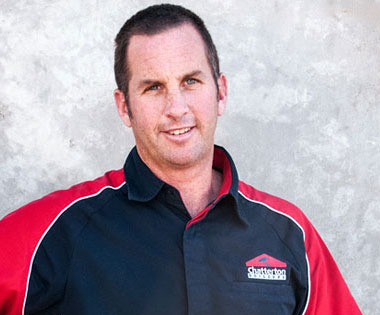Right now, with most New Zealand houses it’s the same old story. Bricks and mortar, tin roof, not much insulation, single glazing, and ‘oh we’ll just chuck on another jumper to keep warm’. That’s got to change, and it is changing slowly.
Brent Chatterton
Builder

Building in New Zealand is definitely evolving.
A lot of that change is being driven by the number of people moving here from overseas, who have knowledge of other products and techniques. There’s a big push right now for engineered timbers like LVL beams, and OSB board.
SIPs panels like Formance that use OSB tend to exceed the structural standard due to the bracing elements of the board.
Effectively you're bracing the whole wall, whereas in today’s construction we tend to go for minimum bracing requirements, so we only brace a certain portion of an exterior wall instead of the whole wall.
Then there are the insulation values you can get out of the Formance panel in proportion to the width of the wall. They're definitely a lot higher in Formance than what you can achieve with pink batts and insulation. So you're also up a notch there.
Construction with panels is a lot quicker, and will continue to get quicker the more we start to build that way.
There’s a real potential for time savings, which equals labour savings. Labour is one of your biggest costs, so the speed to build is going to make a real difference. Basically the house goes up a lot quicker – you get it locked up and get the roof on quicker. Speed and ease of construction are good.
When we did our first couple of homes with SIPs panels down in Wanaka, we did need to adapt some of our tools, but not too far out of the box.
We had the typical Kiwi number-8 wire attitude. When we needed something we made it up, or had an engineer make it up. For example, we had to source skill saws to cut through a 140 mm thick panel. You couldn't just go and buy one off the shelf, so that was a bit interesting. But you're tending to just deal with the same tools that you've got – your nail guns, drills and things like that. It wasn’t too bad. We were able to adapt pretty easily.
In my experience, the end result of building a home with the panelised method is great.
I think from any builder’s point of view, working with timber products is always good. It’s just part of the nature of being a builder. Wood products are a lot easier for builders to work with using the tools they’ve got. Formance is the same. It’s an easy timber product that you can work with that comes up looking and performing great.
And as for home owners, there are lots of reasons to be stoked.
Especially older clients. Say they’re just on the edge of retiring and they build a house out of SIPs. They've got no income coming in, but they now have low energy bills. It might have cost them a bit more to build up front. But monthly bills are going to be a lot lower.
The people who’ve built SIPs houses in Wanaka say they can heat their home just by leaving their computer and TV on standby. There’s enough heat coming off these appliances to heat their home. It’s remarkable.
There are a lot of benefits really. Like the security of a very solid structural house that’s not going to fall over. That means a lot to people around here who have been through the earthquakes.
One of the big differences in building with SIPs panels is the tolerance. SIPs are more like a joinery type of building.
Compared to stick frames, building with SIPs panels is by necessity a lot more accurate. All your measurements have to be bang on right from the start. The result is straighter, more plumb walls than you get with the stick frame approach.
Right now, with most New Zealand houses it’s the same old story. Bricks and mortar, tin roof, not much insulation, single glazing, and ‘oh we’ll just chuck on another jumper to keep warm’.
That’s got to change, and it is changing slowly. The hardest part we’ve struck already with SIPs isn’t the product itself, it’s getting it into the market. We need to get people to realise that wow, this thing’s been round for 20, 30 years already in the rest of the world. So people don't have to be afraid that it’s going to fail.
Getting up to speed with our building techniques in New Zealand is going to be a really good thing.
The Method Building System represents a potential revolution for New Zealand building. I'd like to see it become almost the standard type of building construction. Having products like Formance as an option is fantastic. If I was building another house today or tomorrow myself, I'd definitely be building it out of it SIPs.